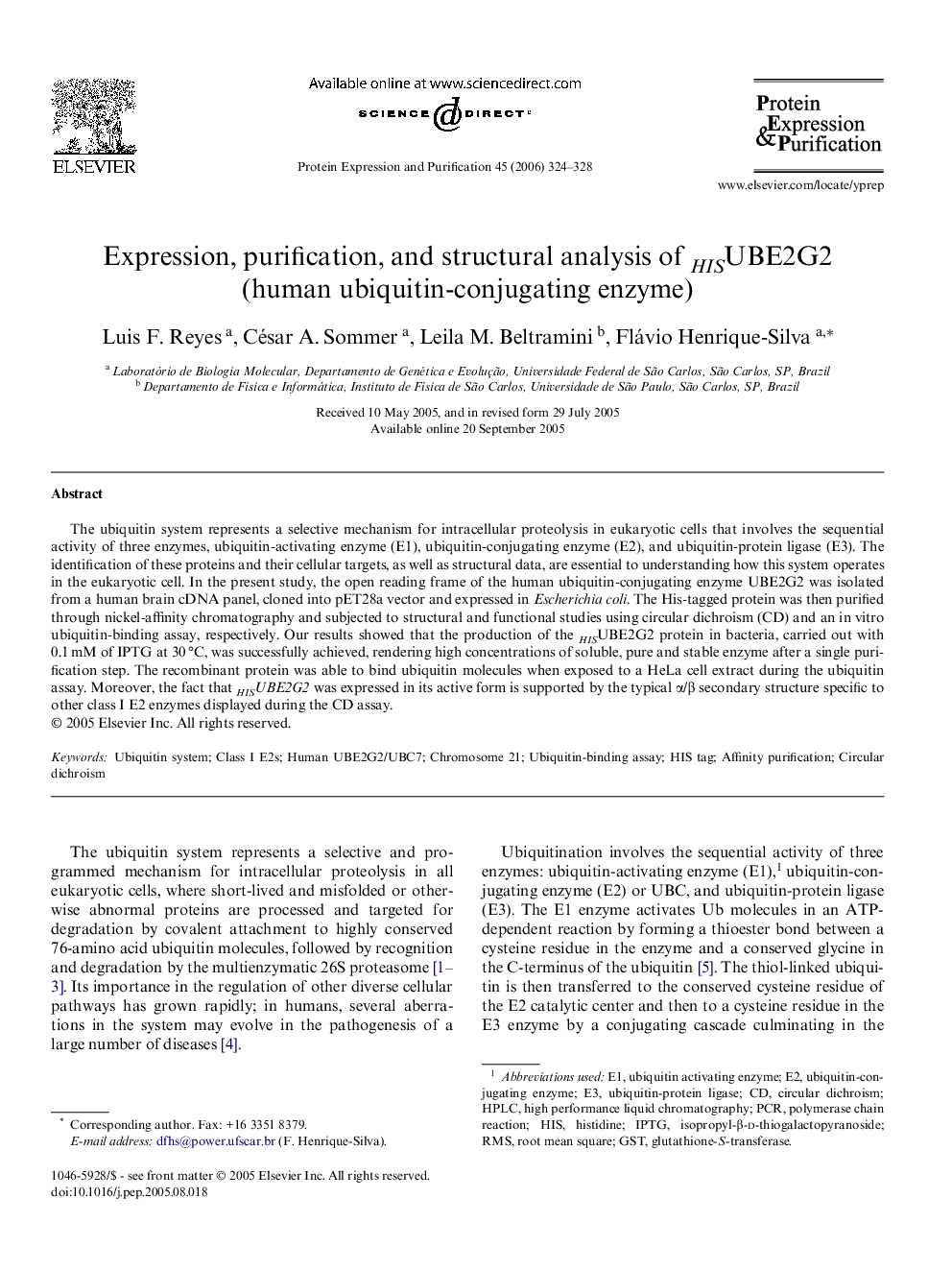| Article ID | Journal | Published Year | Pages | File Type |
|---|---|---|---|---|
| 2022178 | Protein Expression and Purification | 2006 | 5 Pages |
The ubiquitin system represents a selective mechanism for intracellular proteolysis in eukaryotic cells that involves the sequential activity of three enzymes, ubiquitin-activating enzyme (E1), ubiquitin-conjugating enzyme (E2), and ubiquitin-protein ligase (E3). The identification of these proteins and their cellular targets, as well as structural data, are essential to understanding how this system operates in the eukaryotic cell. In the present study, the open reading frame of the human ubiquitin-conjugating enzyme UBE2G2 was isolated from a human brain cDNA panel, cloned into pET28a vector and expressed in Escherichia coli. The His-tagged protein was then purified through nickel-affinity chromatography and subjected to structural and functional studies using circular dichroism (CD) and an in vitro ubiquitin-binding assay, respectively. Our results showed that the production of the HISUBE2G2 protein in bacteria, carried out with 0.1 mM of IPTG at 30 °C, was successfully achieved, rendering high concentrations of soluble, pure and stable enzyme after a single purification step. The recombinant protein was able to bind ubiquitin molecules when exposed to a HeLa cell extract during the ubiquitin assay. Moreover, the fact that HISUBE2G2 was expressed in its active form is supported by the typical α/β secondary structure specific to other class I E2 enzymes displayed during the CD assay.
